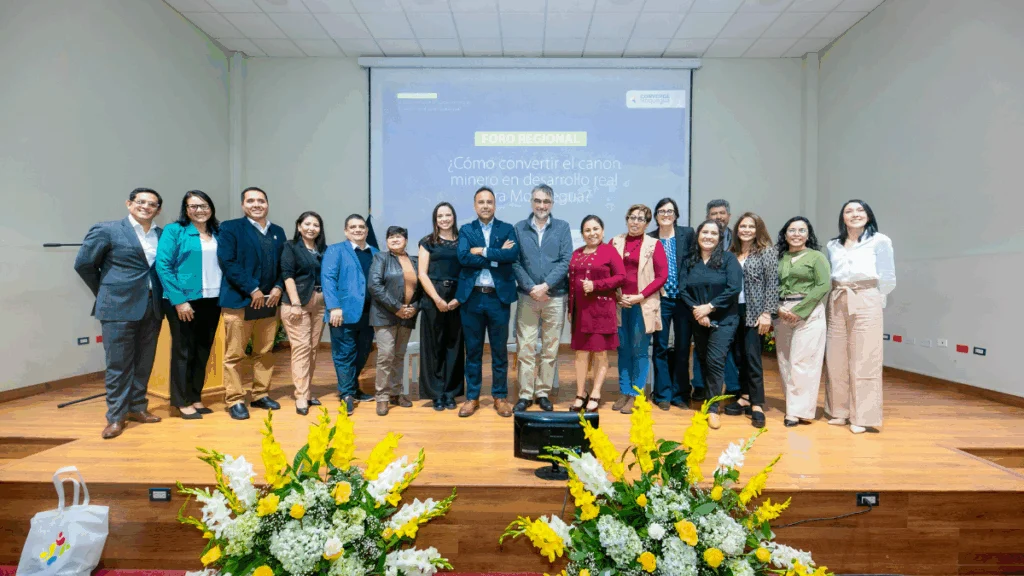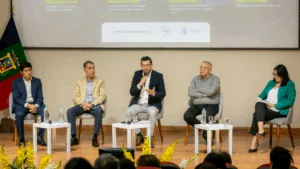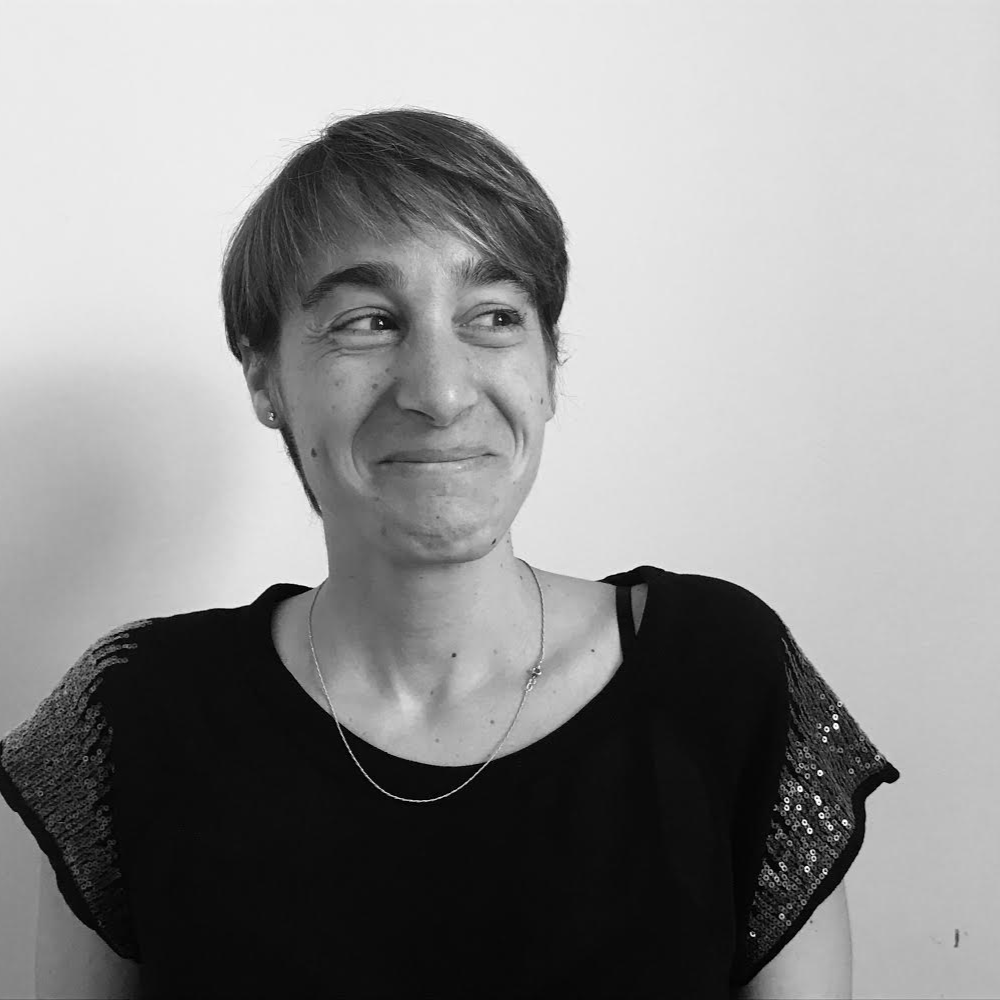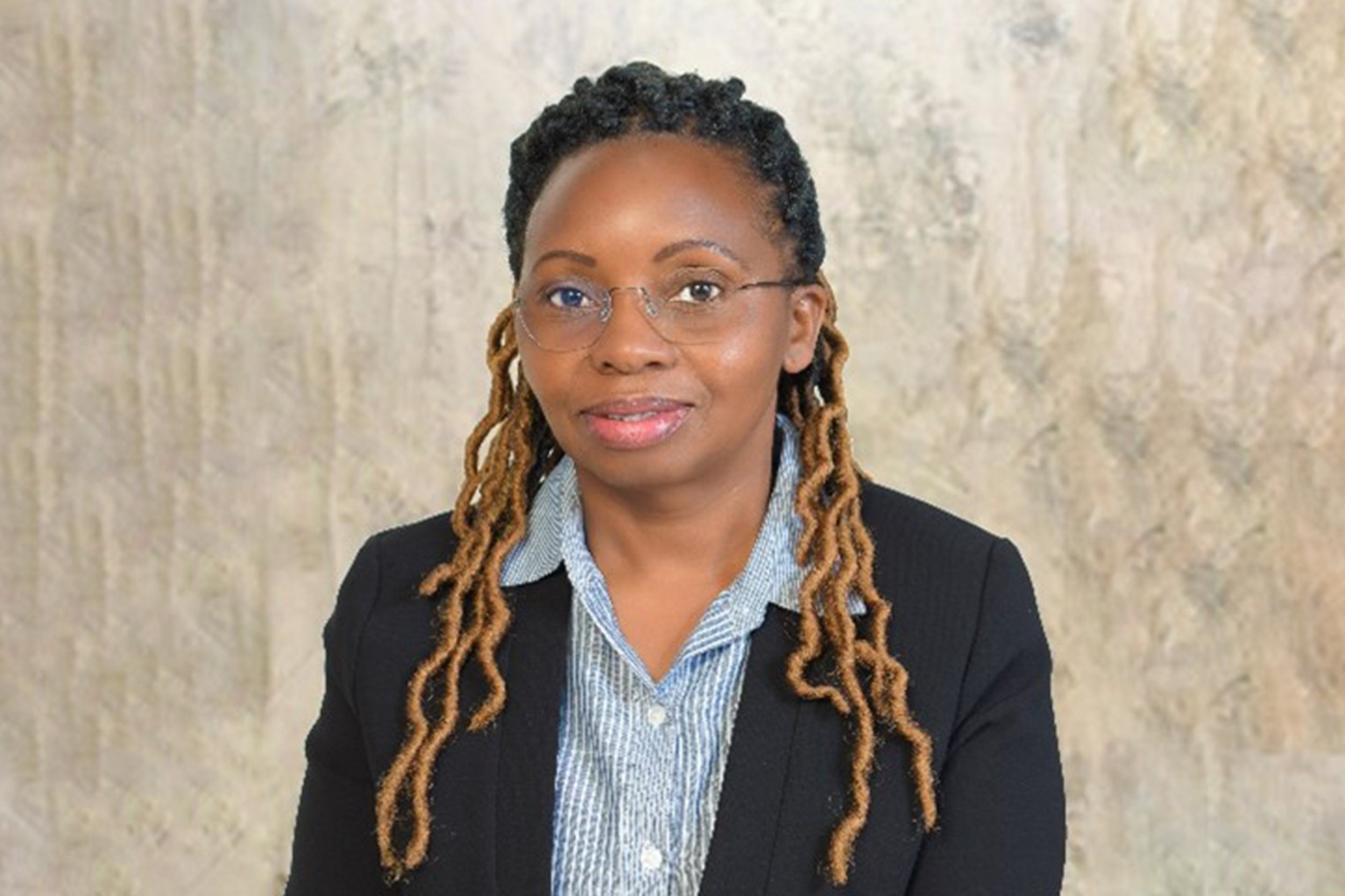Reimagining Mining Revenue in Peru: Turning Moquegua’s Wealth into Sustainable Development

The Governance Challenge Behind the Numbers
Moquegua, one of Peru‘s richest regions in terms of per capita mining revenue, ranks 20th out of 24 in investment efficiency. Projects typically take more than 1,000 days to complete, and some, such as the Omate Water Treatment Plant, have been stalled for over 19 years. Eighty-six percent of stalled projects are funded by the mining canon, a mechanism in which a portion of the revenue from the extraction of natural resources is shared with regional and local governments. Three out of every four soles in local budgets in Moquegua come from the canon, creating dangerous overdependence on a single, volatile source of income. At the same time, human capacity is stretched thin, with only 2 out of 120 officials working in investment management considered fully qualified for their roles.
These numbers underscore a deeper problem: fragmented governance and a short-term mindset that prioritizes building infrastructure over strengthening institutions and services. As the Governance Action Hub Director, Mario Picon, noted, “What happens when governments are not prepared or are distracted by other priorities? That’s when coalitions of civil society, the private sector, and local authorities become essential to move forward.” The forum made clear that Moquegua’s real bottleneck is not a lack of money, but the ability to use it effectively and fairly.
From Dialogue to Roadmap: Key Outcomes
Building a Shared Agenda
What emerged from the forum was the foundation for a shared agenda for Moquegua, one that should include cross-learning with other parts of the country. Roger Guevara, the Governor of Cajamarca, a mineral-rich region in Northern Peru, joined the Forum and shared his administration’s journey in increasing mining canon execution from around 40% to 85% last year, with over 90% execution expected in 2025.
Participants called for a multi-sectoral coalition to drive the effort towards better management and better use of mining revenue, supported by a monitoring group to track progress and the adoption of performance tools, such as Cajamarca’s public investment dashboard. They urged a shift in mindset: instead of measuring progress by the number of projects launched, success must be judged by improvements in education, health, water governance, and opportunities for young people.

One participant reflected on the value of dialogue itself: “It is always valuable for stakeholders in a territory to meet and exchange experiences. Bringing in leaders from Cajamarca was important. And holding the event at the university sends a clear message: we need universities involved in the development process.”
Youth at the Center
Youth inclusion was highlighted as essential to retaining talent in the region and shaping Moquegua’s future. Universities were recognized as natural allies in this effort, able to act as neutral facilitators that manage data openly, support applied research, and provide technical leadership across sectors.
One participant emphasized that the focus must be on projects that genuinely enhance the quality of life: “Health indicators show Moquegua is doing well, but we can do better, especially for children, adolescents, and youth.”
Participants also underlined that financial sustainability is just as important as new infrastructure. Recurrent spending should no longer be dismissed as wasteful—operation and maintenance are integral to making infrastructure last.
Reflecting on the significance of these discussions, Picon remarked: “This forum has been the first effort to show how mining revenue can be better managed and used concretely to meet the region’s most urgent needs.”
From Ideas to Implementation
The discussions also emphasized the importance of moving from lessons to actionable initiatives. Participants were encouraged to step beyond institutional roles and speak personally, fostering more authentic dialogue. This approach generated concrete proposals for projects that could be financed or piloted to close gaps and create opportunities across the territory. As Picon underlined, “the forum in Moquegua was not defined by us, but by a community of very diverse actors, from mining companies to civil society organizations that once had difficult histories with the sector. That’s what makes this an opportunity to be transformative.”
Improving budget execution was one of the most urgent priorities, with the Índice Regional de Inversión Pública (Regional Investment Public Index) highlighted as a key tool to monitor and evaluate the quality of spending. Participants stressed the need to train both public and private professionals to strengthen technical capacity. Effective communication was also identified as fundamental for governance: making project progress visible and transparent is critical for building public trust and sustaining momentum.
As one participant emphasized, “Without operation and maintenance, sustainability weakens. We need to ensure that our financial system considers operation and maintenance as part of what makes infrastructure integral and sustainable.”
Finally, there was a strong consensus on the importance of investing in human capital, encompassing talent, science, and technology, as the backbone of development. Participants underscored the importance of continuity despite political change, valuing past progress while committing to further development.
A National Spotlight on Governance Reform
The forum’s impact extended beyond Moquegua when it was featured on Peru’s national TV program Rumbo Minero. Speaking to audiences across the country, Director Mario Picon emphasized that governance is not the responsibility of governments alone, especially in a nation that has experienced severe political instability. “These processes are long-term, but even a reformist government will eventually need the support of civil society, the private sector, and local authorities,” he explained.
Picon also stressed that governance should not be treated as an afterthought but as the very foundation of sustainability. “Too often we leave governance for the end, or assume it already exists,” he noted. “But it is a dynamic process, one that must reflect the system we want to build over time.”
By bringing Moquegua’s experience into the national spotlight, the interview underscored the Hub’s mission: to create practical, grounded spaces where diverse actors, including those with a history of conflict in the mining sector, can collaborate on shared objectives. As Picon explained, “the event in Moquegua was just a first step, meant to show that it is possible to bring very different actors together around a concrete problem.”
A Model for Governance Innovation
The forum became a springboard for coalition-building, a unique space for building trust and collaboration across sectors. In its aftermath, Governance Action Hub and partners such as GIZ, JICA, and the British Embassy helped convene follow-up dialogues to translate recommendations into next steps for Moquegua.
These dialogues also opened pathways for cross-regional learning, particularly with Cajamarca, where similar challenges and solutions are being tested. As Picon emphasized, “in Cajamarca, progress came from clear political leadership combined with active support from civil society and the private sector. It shows that when there is a clear goal and the will to pursue it, things can move quickly.”
The message from Moquegua is clear: the challenge is not a shortage of resources, but the need for vision, trust, and capacity. By building on the outcomes of this forum, mining revenues can become what they were always meant to be: the engine of inclusive and sustainable development.
Join the Governance Explorers
We are bringing together a global network of people eager to rethink governance and influence local, national and global debates.



